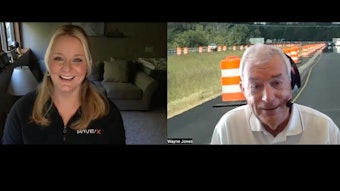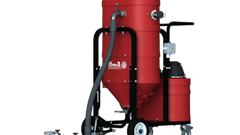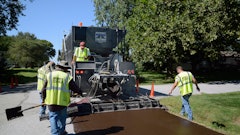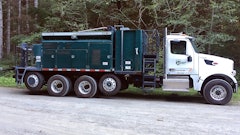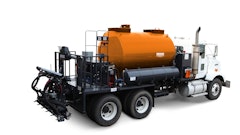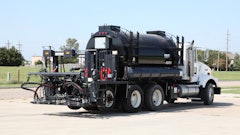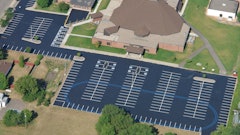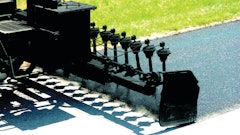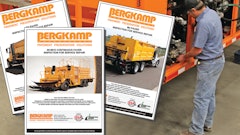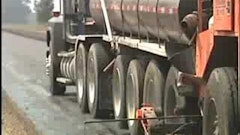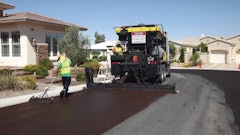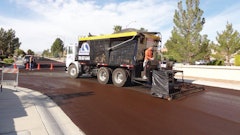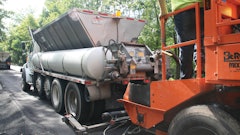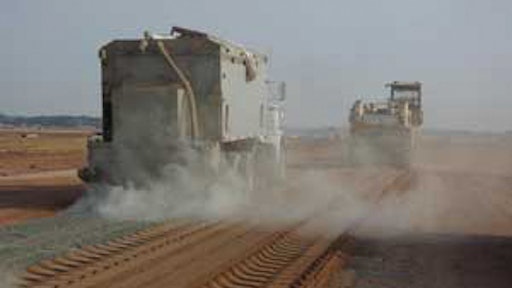
Things weren't looking so good for the Road Reclamation division of Slurry Pavers. Just three years after they started doing road reclamation, Slurry was considering selling its equipment and getting out of the business. The company planned on dumping the division that was losing some $300,000 a year and focusing on its established, profitable divisions.
As a last-ditch attempt to salvage what they thought could be a profitable line of work, Slurry Pavers moved Larry Roberts into the manager's position of the Reclamation division in August, 2001. Within two years the division turned a profit. In October 2006 Slurry started work on its biggest job to date, the new 4th Runway construction project at Washington Dulles International Airport in Washington, D.C. The expanded Road Reclamation and Soil Stabilization division now accounts for 14 percent of Slurry's revenue.
Secrets to Success
The keys to this amazing turn-around? Roberts cites three. First, Slurry had to expand its vision. "We were doing only full-depth reclamation." With FDR a machine passes over a pavement section, pulverizing the existing asphalt and underlying materials in place. This material is then mixed together in place with cement, lime, or asphalt emulsion to form a stabilized base material for pavement. It's a quick, cost-effective way of rebuilding a pavement section by using the in-place materials, which reduces the impact on our environment and eliminates the damage to existing roads due to the hauling of materials
"But there wasn't enough FDR work to keep our crews busy consistently. With low utilization rates for our equipment, we weren't getting an acceptable return on investment." The solution was to move into soil stabilization, where cement (or lime, in wet conditions) is mixed with soil to form a solid base for roads.
Second, Slurry had to get inventive when they couldn't find the equipment they needed. Roberts designed a spreader that lays down cement for soil stabilization because nothing on the market did a satisfactory job. The cement must be laid down evenly and at a specific rate. On the Dulles project, for example, the rate is 45 pounds per square yard. Tolerance is +6 pounds, -0.
Roberts retrofitted a couple of WWII-vintage military 6x6 trucks with his spreader. The system has worked so well it's now installed on all seven of the company's spreader trucks.
Third, Slurry had to adopt technology that allowed for high-speed, high-capacity, high-precision work. As it has for so many contractors, the technology solution came down to lasers and GPS. Slurry had frustrating results with systems from other manufacturers before finally settling on Topcon products provided by Atlantic Laser Supply. Among the Topcon pieces Slurry is using at Dulles are two PZL-1 lasers, a hiper + rover, and mmGPS units on two motor graders. The general contractor, Lane Construction, has a GPS reference station set up at their job trailer.
Adapting to the technology wasn't hard. Roberts says he had about a two-week learning curve where he worked with the equipment a little bit each day. "The most important thing for me was learning to trust the equipment," he said. John McCormick, their rep from Atlantic Laser, put on a demonstration that helped build the trust factor. "With all the data loaded into one of our graders, John laid a quarter on top of one of our hubs. Using the Topcon millimeter GPS the grader operator swept the quarter off the hub and never disturbed the hub itself."
Big, But Exact
Slurry's task at Dulles is to provide a stable base for the runway and associated taxiways. They're working some 639,000 square yards (132 acres), stabilizing it by mixing cement into the soil. The work is not only high-volume, it's also highly technical. There's little room for error in any task related to the airline industry.
The process begins with the removal of all native topsoil. Screened fill dirt - free of rock and organic material - is brought in. Slurry then applies Type I/II Portland cement at the prescribed rate. The cement is mixed with the soil and the mixture simultaneously pulverized with Wirtgen reclaimer machines. Slurry has two units - a 2500 and a 2500S - on site. To meet spec, 80 percent of the soil, absent of rock, must pass through a #4 screen sieve. Openings in a #4 screen are 4.75 mm, or about 3/16" square. It takes two to four dry passes to work the soil down to size.
Cement is delivered by tanker trucks. It takes seven tankers to fill the storage tank ("pig") on site. When cement is transferred from the pig to a spreader truck, bag-type filters catch the cement dust that would otherwise escape as air is displaced in the spreader's hopper by the incoming cement. This is to minimize dust. A spreader truck holds 12 1/2 tons of cement and covers 555 square yards in a 625-foot pull.
After the dry passes comes a wet pass. As with the cement, water distribution is tightly controlled. A typical range is 850 to 1,800 liters per minute. Moisture content of the finished mixture is to be 18 percent. Slurry uses Dickey-John moisture meters to calibrate spread rates based on ambient soil moisture content.
As soon as the water hits the ground, the clock starts running. Compaction must begin within an hour of when water is applied. Slurry makes up to five passes with a padfoot drum and two passes with a smooth drum roller. All passes are in vibratory mode except for the final. Compaction is checked with a nuclear ("nuke") gauge. Once compaction is done, the motor graders come on and finish the job. Grading must be completed within three hours of when the water goes down.
At that point, Slurry Pavers is done. Next a bituminous tack coat is sprayed over their work and allowed to cure for five to seven days. Then comes a 6-inch layer of cement-treated base (CTB, also called cement-treated aggregate, or CTA). On top of the CTB comes 15 to17 inches of concrete. The concrete is mixed at a batch plant on site and hauled to the runway in dump trucks. No mesh or rebar is typically used to reinforce the concrete paving. Dowels are placed automatically where there will be transverse saw cuts for stress relief in the surface of the runway. Dowels are also placed at the edges where adjacent, consecutive pours butt together. The surface is bull-floated by hand before being swept with wet burlap. The final step will be to cut grooves the length of the runway.
Growth 101: Work Hard, Get Help
Slurry Paving began working at Dulles in October 2006 and will be substantially finished with their work in October 2007. They'll be back briefly in 2008 to stabilize backfill placed over the tunnel providing transportation from the runway to the existing airfield.
Two of Slurry's four soil stabilization crews are on site. The other two are working road projects in Virginia. Despite their proficiency at managing a huge job such as Runway 4, the road jobs and subdivision work are more typical for Slurry. "A lot of our jobs run one to three days," says Frank Nash, Slurry's superintendent at Runway 4. "This is quite a jump up in scope for us."
How did they make the leap? Constant refinement of their operation, from fabricating their own hardware to developing their own system of hand gestures to communicate over the noise and distance of a job site. (Nash stops at one point while driving this reporter around Runway 4. Looking straight ahead, he takes both hands off the steering wheel, points his fingers down and wiggles them like fishing worms. Fifty yards away the operator of a Wirtgen reclaimer waves back. He got the message. Nash turns and smiles. "That's my sign to start the wet passes," he said.)
The greatest enabler, according to Roberts, is Topcon technology and the service that comes with it. "We couldn't handle a job with these demands the way we used to work. The lasers and GPS are essential to our operations now." As for service, Roberts can't stop praising John McCormick and Atlantic Laser. Asked for an example, he tells of a GPS that fell off a truck at ten o'clock on a Friday night. The unit was recovered, but was damaged. Roberts called McCormick. Come Monday morning, McCormick had another unit for Slurry to use while theirs was being repaired. "He gave up his weekend chasing down a solution to a problem that was entirely our fault. That's above-and-beyond, in my book."
The Dulles 4th Runway effort is a $190 million project, and Slurry Pavers' Road Reclamation and Soil Stabilization crew has a key role in its development. Not bad, considering the division involved was slated for death not long ago. Vision. Innovation. The right equipment. The first two grew internally. For the third, Slurry got help from the outside.



